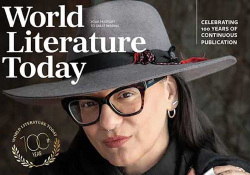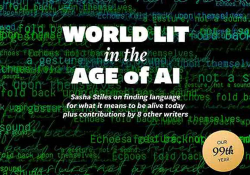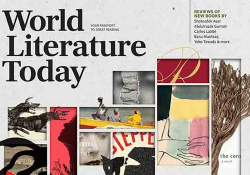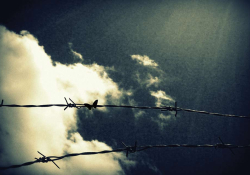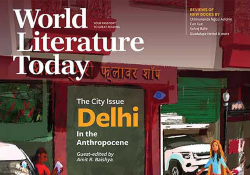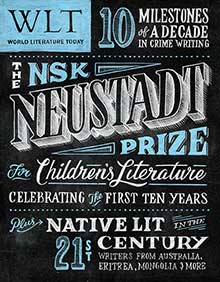Editor’s Note

From our vantage point here on the Oklahoma plains, we’re constantly reminded that we live in “Native America” (every time we look at the license plate of a car in front of us), but few probably realize that not only is most of the state’s Native heritage rooted elsewhere, it is actually transnational in origin. Centuries before the interstate highway system, trails leading to and through the territory that eventually became Oklahoma crisscrossed the Americas. It is in that spirit of hemispheric (indeed, global) expansiveness that we present this issue’s special section on international Indigenous literatures (page 27).
But is there such a thing as a global Native literature? When one reads the latest theories about what constitutes the vexed category of “world literature,” not only are Native literatures rarely factored in to those discussions, they are often absent altogether. Moreover, Indigenous writers might be forgiven for wanting to resist being co-opted into a theoretical paradigm that has long been dominated by Eurocentric (even neocolonialist) thinking. In Trans-Indigenous: Methodologies for Global Native Literary Studies (2012), American scholar Chadwick Allen points out that Indigenous intellectuals are “understandably wary of global comparative frameworks for Indigenous studies—literary, cultural, or otherwise—when there is so much work still to be done within specific, distinct traditions and communities. . . .
The local, having finally won a place at the academic table, becomes engulfed (once again) in the name of the global.”
With such caveats in mind, rather than “engulfing” the Native writers featured in this issue in the name of the global, our goal is to showcase, rather, the remarkable variety of Indigenous literary expression around the world. No matter how we “reckon” or label indigeneity, to use Joshua Nelson’s apt term in his introduction to the special section (page 28), when it comes to understanding literature, Native authors remind us of the importance of situating what we read in the contexts of place, community, and language. In this last category, we present writers working in endangered languages like Arvanitika, Faroese, Ngarluma/Yindjibarndi, and Zoque that push back against the pressure of dominant tongues (Modern Greek, Danish, Australian English, and Mexican Spanish, respectively); authors conversant in two languages who choose to write in the dominant one (Italian over Tigrinya, in the case of Ribka Sibhatu); and still others who write in languages spoken by millions (English, Portuguese, Mongolian) yet champion Indigenous worldviews in their work.
In the twenty-first century, globalization requires that we “acknowledge the mobility and multiple interactions of Indigenous peoples, cultures, histories, and texts,” writes Chadwick Allen, even though the trend toward transnational studies currently in vogue in the academy often elides Native perspectives, on the one hand, and favors critical discourse over creative genres on the other. In a fascinating interview in this issue, translator Simon Wickham-Smith contends that “Mongolians want to benefit on our terms from globalization, but we do not want our culture to suffer or to lose out or to be melded into a mass of undifferentiated cultures” (page 51). In his translation of Ochirbatin Dashbalbar’s beautiful love poem “For You,” we read that the world “flickers like stories,” and the couple’s children “fall from the distant stars” (page 54). No matter the constellation overhead, or if one has steppes, plains, islands, or mountains underfoot, Native writers’ stories flicker with light from our common stars.
Editorial note: For an excellent overview of Oklahoma’s Native literary heritage, see Geary Hobson, “The Literature of Indian Oklahoma,” WLT (Summer 1990). See also our Spring 1992 issue, “From This World: Contemporary American Indian Literature,” as well as the July 2010 cover feature devoted to Sherman Alexie.


